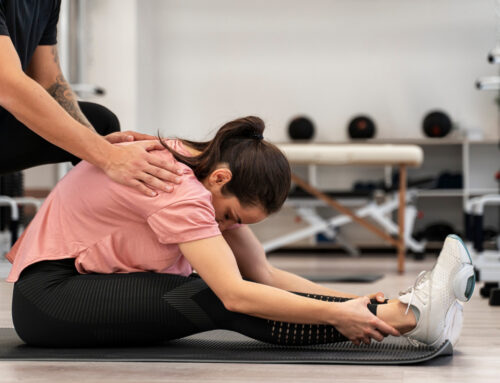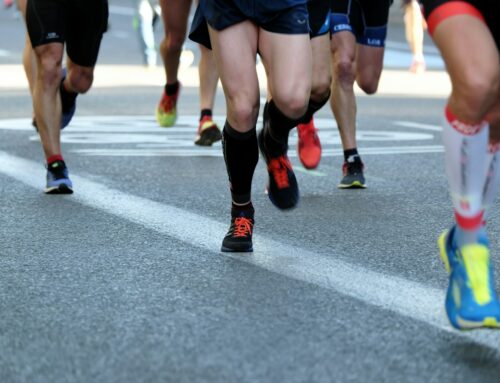Regularly exercising allows you to strengthen different muscle groups and improve cardiovascular health. But sometimes, people who regularly exercise forget that muscle recovery allows you to reap the benefits of why your exercise in the first place: maintaining or increasing muscle mass, boosting brain function, and strengthening your body. We’ll explore why muscle recovery matters in more detail, look at factors that prevent or foster muscle recovery, and explain how to measure your recovery progress.
Why Muscle Recovery Matters
When you exercise your body, you cause small micro-tears in your muscles. Your immune system then rushes in to repair the damage. When your body’s tissues recover, they become stronger than they were before. This process, repeated over and over again, is what results in increased muscle strength. This is known as muscle hypertrophy.
Muscle recovery matters because if we aren’t giving our bodies what they need to recover, we can overuse and damage the very muscles we’re trying to strengthen! Overuse injuries can occur when we continuously exercise muscle groups without giving them proper recovery time. What’s even worse is that when you exercise overused muscles, increased tissue inflammation can occur. This increases your risk of having an injury because your joints aren’t able to keep in steady posture and movement when they are fatigued. After properly recovering, we have greater control over muscle contractions and joint proprioception (posture and movement).
Factors That Prevent or Foster Muscle Recovery
There are three main factors that prevent or foster muscle recovery:
- Stress
- Food and nutrition
- Proper exercise scheduling
- Sleep
We’ll take a look at how each one of these factors helps or hurts your recovery process.
1. Stress
Stress is one of the biggest contributors to inhibited muscle recovery. When our bodies are under emotional and/or physical stress, we have a decreased ability to heal and recover. When we’re stressed, our body goes into survival mode. One study shows that the type of stress the participants experienced didn’t matter. Whether the stress was perceived or real, the participant’s bodies responded the same. So even if you’re feeling stress without a clear cause, your body perceives that stress the same way regardless of cause. Implementing stress management can help you both physically and mentally. Here are some of the best things you can do to minimize stress, according to the American Heart Association:
- Spend time in nature and concentrate on sights and sounds
- Connect with family and friends
- Explore breathwork and meditation
- Implement regular exercise
2. Food and Nutrition
Fueling your body with proper nutrition is crucial to effective muscle recovery. There are many different opinions on what optimal nutrition looks like, and we won’t dive into the specifics in this blog post! We encourage you to seek personal nutrition advice from a registered Dietician or Health Professional. *We will note two different key nutritional players in muscle recovery, though: fluid/electrolyte intake and glycogen stores.
After working out, your body needs to replace fluids and electrolytes lost through sweating. Most of us are familiar with consuming electrolyte drinks that contain water, electrolytes (sodium and potassium), and sugar. The Australian Institute of Sport states, “Sweetened drinks are generally preferred and can contribute towards achieving carbohydrate intake goals. Replacement of sodium lost in sweat is important in maximizing the retention of ingested fluids… To allow for complete fluid restoration, it may be necessary to consume 150% of fluid losses.” Adding electrolyte drinks during and after your exercise routine could help muscle recovery. To thoroughly rehydrate, you should avoid caffeine and alcoholic beverages after exercise.
Eating an adequate amount of carbohydrates immediately after exercise will help replenish the glycogen stores in your muscles and liver. This leads to faster recovery from prolonged exercise. If you’re interested in learning more about replenishing glycogen stores after workouts, the research article “Regulation of Muscle Glycogen Repletion, Muscle Protein Synthesis and Repair Following Exercise” has a lot of interesting information on replenishment.
3. Proper Exercise Scheduling
Creating a proper exercise schedule will help maximize your workouts and avoid repeated use of muscles day-after-day. To avoid overuse injuries, consider not working muscle groups for two days in a row. Allow for at least one day of recovery before working for the same muscle group again. Recovery time is likely to vary from person to person on the intensity of your workouts.
4. Sleep
Most of us know that improved sleep is important for many different aspects of health. Adequate sleep releases the human growth hormone which helps repair damaged tissue in the body. Sleep is essential to healing our bodies and giving us the energy we need to recover after physical activity.
Measurements For Muscle Recovery
Measuring muscle recovery with at-home solutions can help you better understand your body and where it is in the recovery process. The CO2 tolerance test and the grip strength test are both easy to perform and measure.
1. CO2 Tolerance Test
The CO2 Tolerance Test is a great tool to use if you’re trying to determine your stress levels. It shows how sensitive a person is to stress by looking at how well they can utilize oxygen and breathe.
To run the test, you’ll breathe through four different breath cycles. Breathe only through your nose if you are able to!
Step 1: Breathe in for 3 second and exhale out for 3 seconds. Repeat this three times.
Step 2: On your fourth breath cycle, breathe in as deeply as you can and exhale as slowly as possible.
Step 3: Compare your results to the chart below.
Results:
< 25 seconds = probably not recovered
30-65 seconds = probably recovered
65-120 seconds = completely recovered
2. Grip Strength Test
Grip strength is usually measured with a hand-held dynamometer (you can purchase one online for about $30). This can give you a good idea of how well your muscles have recovered. The lower your measurement, the weaker your strength. The higher your measurement, the higher your strength! Start by establishing a baseline over a few weeks by testing your grip strength in the morning. From there, you should get an idea of where your average grip lies. Now you will be able to tell from much lower-than-normal measurements that your muscles need more time to recover.
In conclusion, muscle recovery is something that shouldn’t be neglected! While you may want to stick to your dedicated exercise routine, it’s important to make sure that you make time for your body to get the rest that it needs. If you’re constantly feeling over-exhausted and your performance is decreasing in your workouts, it may be time to consider adding more rest days or an extended period of rest.
References:
Burke LM. Nutrition for post-exercise recovery. Aust J Sci Med Sport. 1997 Mar;29(1):3-10. PMID: 9127682.
Dáttilo M, Antunes HKM, Galbes NMN, Mônico-Neto M, DE Sá Souza H, Dos Santos Quaresma MVL, Lee KS, Ugrinowitsch C, Tufik S, DE Mello MT. Effects of Sleep Deprivation on Acute Skeletal Muscle Recovery after Exercise. Med Sci Sports Exerc. 2020 Feb;52(2):507-514. doi: 10.1249/MSS.0000000000002137. PMID: 31469710.
Ivy JL. Regulation of muscle glycogen repletion, muscle protein synthesis and repair following exercise. J Sports Sci Med. 2004 Sep 1;3(3):131-8. PMID: 24482590; PMCID: PMC3905295.
Petrofsky JS, Khowailed IA, Lee H, Berk L, Bains GS, Akerkar S, Shah J, Al-Dabbak F, Laymon MS. Cold Vs. Heat After Exercise-Is There a Clear Winner for Muscle Soreness. J Strength Cond Res. 2015 Nov;29(11):3245-52. doi: 10.1519/JSC.0000000000001127. PMID: 26502272.
Sherman WM. Recovery from endurance exercise. Med Sci Sports Exerc. 1992 Sep;24(9 Suppl):S336-9. PMID: 1406207.
*Please always consult your physician before beginning any exercise program. This general information is not intended to diagnose any medical condition or to replace your healthcare professional. Consult with your healthcare professional to design an appropriate exercise prescription. If you experience any pain or difficulty with these exercises, stop and consult your healthcare provider. We do not provide medical aid or nutrition advice for the purpose of health or disease, nor do we claim to be dietitians. Any nutrition recommendation is not intended to diagnose, treat, cure, or prevent any disease.





